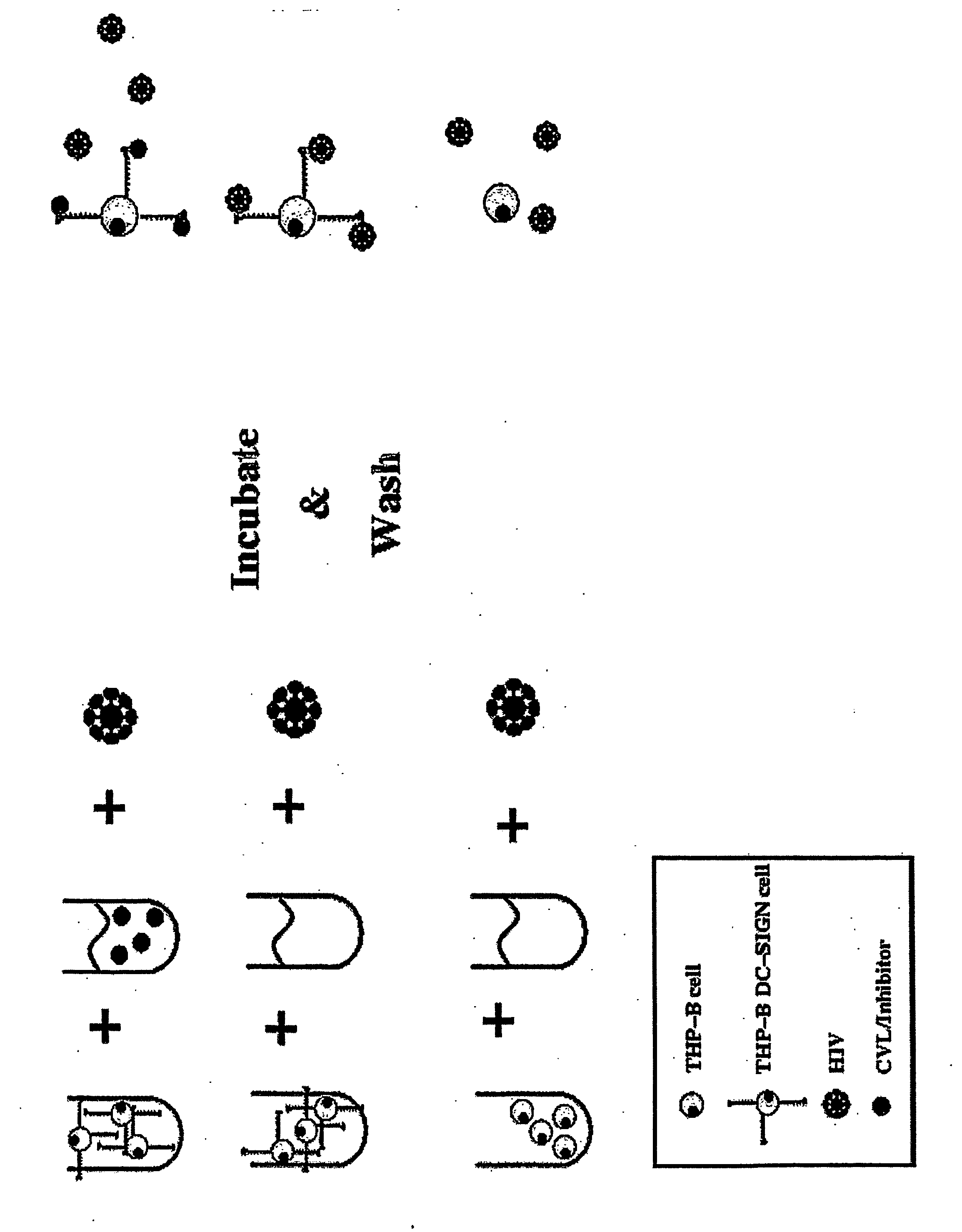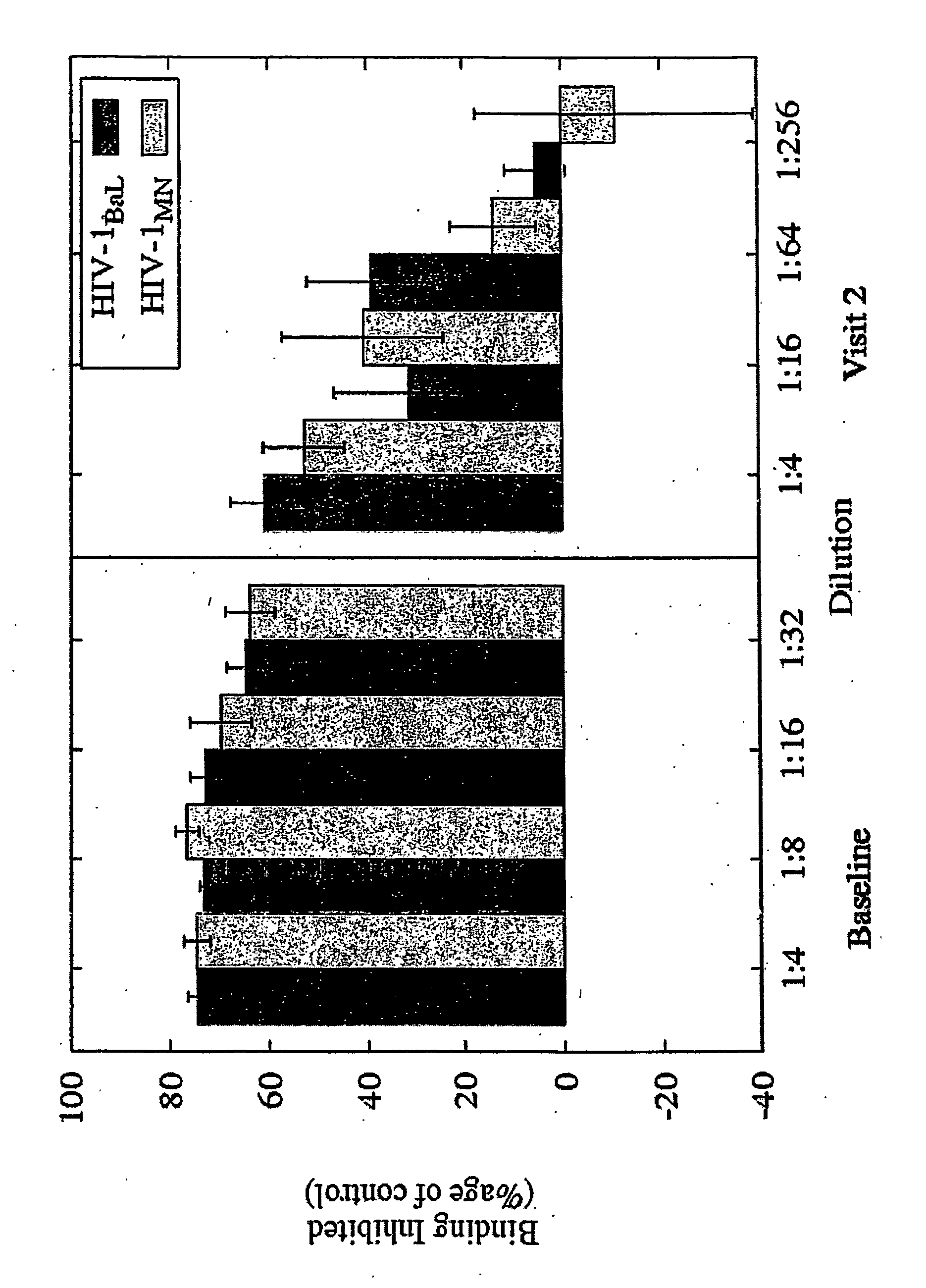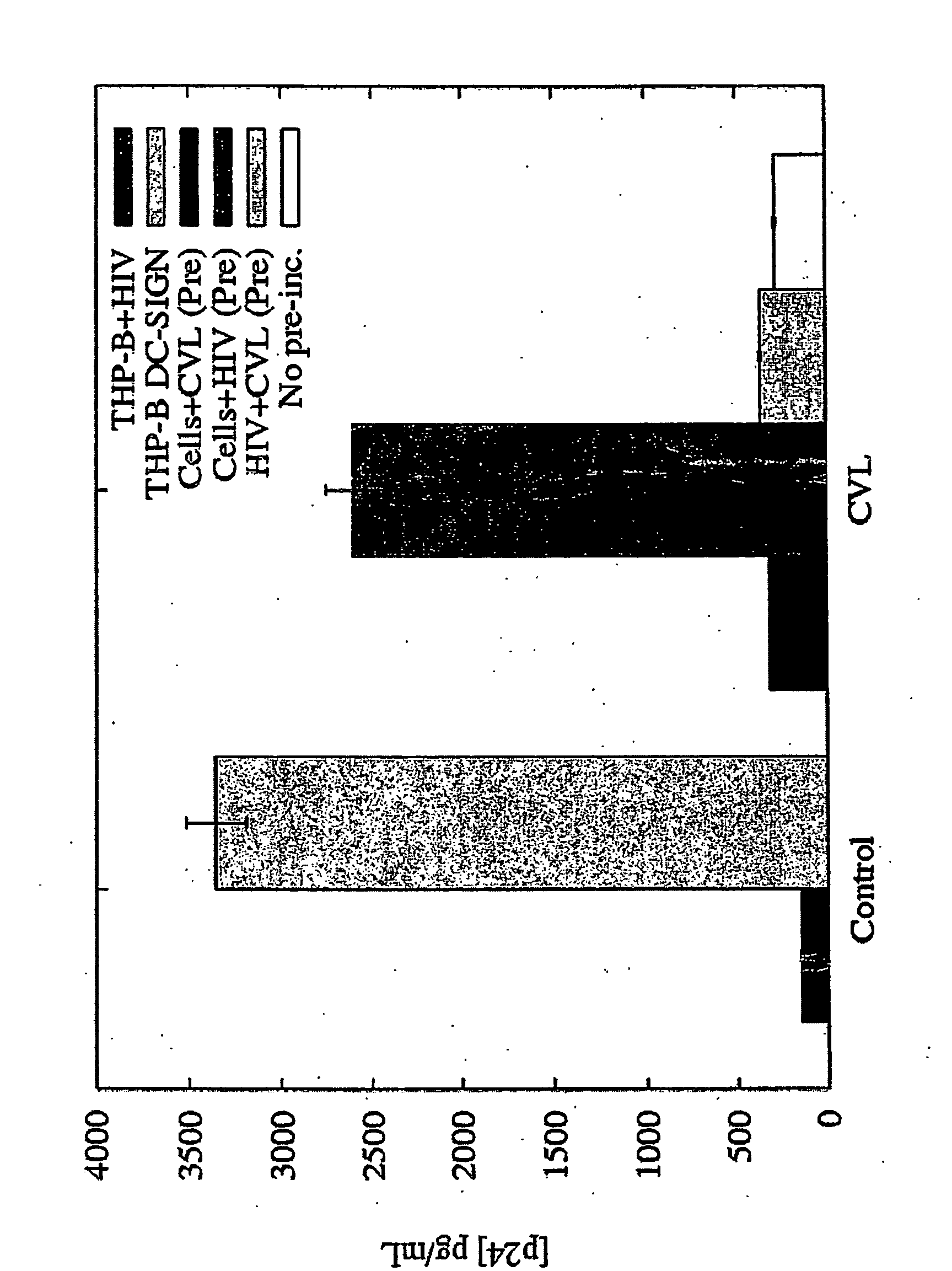Composition for blocking hiv binding to dendritic cells and methods of use thereof
a technology of dendritic cells and dendritic cells, which is applied in the direction of animal/human proteins, sugar derivates, biocide, etc., can solve the problems of compound being susceptible to periodate oxidation, and achieve the effects of preventing vaginal and anal transmission, preventing vaginal transmission, and reducing or otherwise inhibiting the transmission of hiv-1 or hiv-2
- Summary
- Abstract
- Description
- Claims
- Application Information
AI Technical Summary
Benefits of technology
Problems solved by technology
Method used
Image
Examples
example 1
Materials and Methods
[0081] The present example provides exemplary experimental protocols employed to generate certain of the data described herein.
[0082] a. Participants and Sample Collection
[0083] Women were recruited in accordance with UIC's IRB. At the initial screening, candidates filled out a detailed questionnaire e of their risk behavior, personal habits (such as drug and alcohol use), and medical history. Blood was drawn for HIV serology. Women meeting the criteria (see Results) returned to the clinic for physical examination, at which time cervico-vaginal lavages (CVLs) were collected. Collection was carried out as follows: 10 mL of sterile saline were ejected against those of the cervix, and collected back in the same pipette. Lavages were centrifuged, and the supernatant was stored at −80° C. until used. At that time, aliquots were heat inactivated (54° C., 15 minutes) and filtered (0.22 μm).
[0084] b. Tests Run on CVLs
example 2
Primary Dendritic Cells Contacted with the Compound are Unable to Present HIV to T Cells
[0125] CVLs were collected from high risk and low risk women and heat inactivated. Following centrifugation and filtration the CVL supernatant were tested as follows. THP DC-SIGN cells were exposed to HIV-1BAL in the presence and absence of CVLs at 37° C. for 1 hour and then washed to remove unbound virus. The cells were then washed and lysed. Bound HIV was determined by using a p24 assay on the cellular lysates. The HIV-1-p24 antigen ELISA assay is well known to those of skill in the art. The assay is a twin-site sandwich ELISA and has been described in detail in the art (Moore et al., Science, 250: 1139-1142 (1990) and Moore et al., J. Virol. 65: 852-860, 1991). Briefly, p24 antigen is captured from a detergent lysate of virions onto a polyclonal antibody adsorbed onto a solid phase. Bound p24 is detected with an alkaline phosphatase-conjugated anti-p24 monoclonal antibody and the AMPAK ELISA a...
PUM
| Property | Measurement | Unit |
|---|---|---|
| molecular weight | aaaaa | aaaaa |
| molecular weight | aaaaa | aaaaa |
| temperatures | aaaaa | aaaaa |
Abstract
Description
Claims
Application Information
 Login to View More
Login to View More - R&D
- Intellectual Property
- Life Sciences
- Materials
- Tech Scout
- Unparalleled Data Quality
- Higher Quality Content
- 60% Fewer Hallucinations
Browse by: Latest US Patents, China's latest patents, Technical Efficacy Thesaurus, Application Domain, Technology Topic, Popular Technical Reports.
© 2025 PatSnap. All rights reserved.Legal|Privacy policy|Modern Slavery Act Transparency Statement|Sitemap|About US| Contact US: help@patsnap.com



